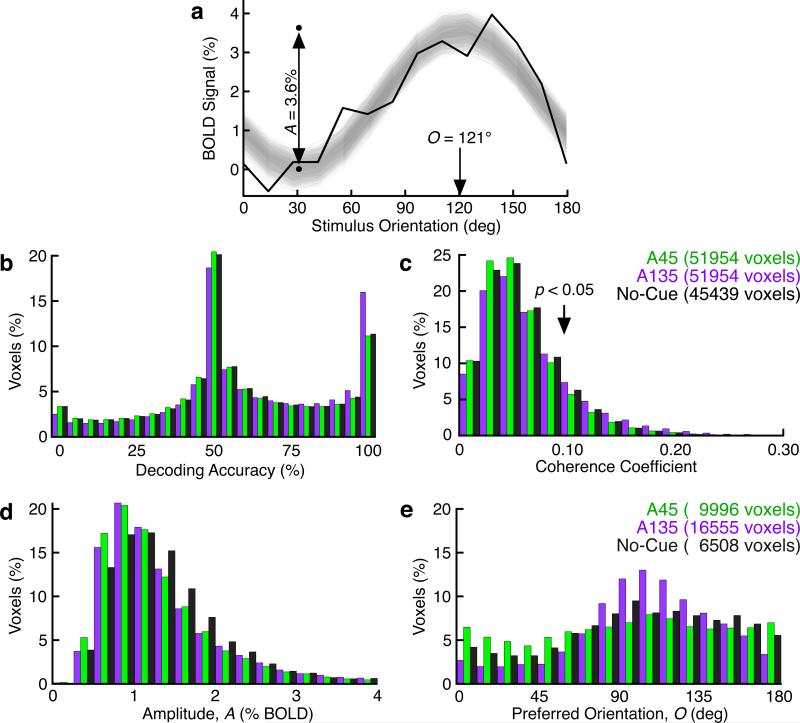2.
Orientation-selectivity in single V1 voxels. A. Fourier and regression analysis (see Methods) provides the amplitude (A) and peak (O) of each voxel's orientation tuning curve. Peaks are offset to account for the hemodynamic lag between stimulus presentation and BOLD response. Shaded region shows a confidence interval of the fitted sine wave for this example voxel. Orientation-selectivity metrics for this voxel: coherence coefficient = 0.2131 (p=1.7·10−5), decoding accuracy ≈ 100%. B. Many individual voxels accurately discriminate between their preferred and anti-preferred orientations (mode at 50% represents chance performance). C. Many voxels have significant coherence at the signal frequency. Coherence coefficient of 0.0984 (arrow) is the threshold for statistical significance. B and C include all V1 voxels. D. Among orientation-selective voxels, attention recruited weakly orientation-selective voxels. E. Among orientation-selective voxels, the distribution of preferred orientations is biased toward the attended orientation.

